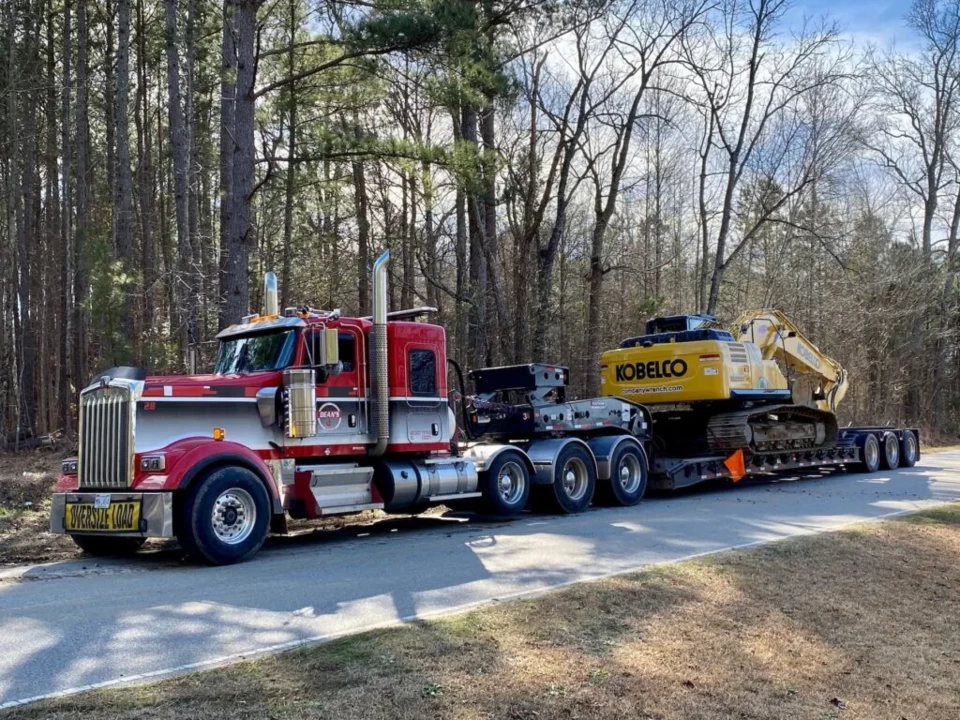
Heavy equipment moving is a critical task in various industries, including construction, manufacturing, and logistics. The process involves relocating large and often cumbersome machinery safely and efficiently. Whether you’re transferring equipment within a site, to a new facility, or across long distances, understanding the best practices for heavy equipment moving can help ensure a smooth operation. In this guide, we’ll cover the essentials of heavy equipment moving, including planning, equipment, safety considerations, and tips for a successful move.
What is Heavy Equipment Moving?
Definition and General Process
Heavy equipment moving refers to the process of transporting large and heavy machinery from one location to another. This includes the relocation of construction equipment, manufacturing machinery, and other industrial tools that are too heavy or bulky for standard moving methods. The process typically involves the use of specialized equipment such as cranes, flatbed trucks, and trailers designed to handle the weight and size of the machinery. Proper planning and execution are essential to ensure the equipment is moved safely and efficiently without damage.
Common Types of Heavy Equipment
Heavy equipment includes a wide range of machinery used in various industries. Common types include:
Excavators: Large machines used for digging and earthmoving.
Bulldozers: Powerful machines designed for grading and pushing materials.
Cranes: Equipment used for lifting and placing heavy loads.
Forklifts: Vehicles used for moving and stacking materials.
Backhoes: Versatile machines used for digging and excavation.
Each type of equipment has specific requirements for safe moving, which must be taken into account during the planning process.
Importance of Proper Equipment Moving
Proper heavy equipment moving is crucial to avoid damage to the machinery, ensure safety, and maintain operational efficiency. Incorrect handling can lead to costly repairs, delays, and potential safety hazards. By following best practices and using the right equipment, you can minimize risks and ensure that the machinery arrives at its new location in good condition, ready for immediate use.
Planning for Heavy Equipment Moving
Assessing the Move
Before moving heavy equipment, conduct a thorough assessment of the move. This includes evaluating the size, weight, and dimensions of the machinery, as well as the distance and route of the move. Determine whether any disassembly or special preparation is needed to facilitate the move. Assessing the move helps in selecting the appropriate equipment and resources for a successful relocation.
Choosing the Right Equipment
Selecting the right moving equipment is essential for a safe and efficient move. Common equipment used in heavy equipment moving includes:
Flatbed Trucks: Ideal for transporting large machinery with a flat surface.
Lowboy Trailers: Designed for hauling heavy equipment with a lower clearance.
Cranes: Used for lifting and placing machinery, especially in tight or difficult locations.
Dollies and Rollers: Used for moving equipment within a site or facility.
Choose equipment that matches the requirements of your specific move, considering factors such as load capacity, maneuverability, and accessibility.
Coordinating with Stakeholders
Effective communication with all stakeholders involved in the move is crucial. This includes the equipment operators, transportation providers, and facility managers. Coordinate the timing of the move, ensure that all necessary permits and approvals are obtained, and confirm that everyone is aware of their responsibilities. Proper coordination helps avoid misunderstandings and ensures that the move proceeds smoothly.
Safety Considerations
Pre-Move Safety Checks
Before starting the move, conduct a thorough safety check of all equipment and machinery. Inspect the moving equipment for any signs of wear or damage, and ensure that it is in good working condition. Verify that all safety features, such as brakes and lifting mechanisms, are functioning correctly. Additionally, ensure that the machinery being moved is properly secured and prepared for transport.
Training and Certification
Ensure that all personnel involved in the move are properly trained and certified. This includes operators of cranes, trucks, and other specialized equipment. Proper training ensures that workers understand how to handle the machinery safely and efficiently. Certifications from relevant organizations or industry bodies can be an indicator of a worker’s qualifications and expertise.
Following Safety Protocols
Adhere to established safety protocols throughout the moving process. This includes using personal protective equipment (PPE) such as helmets, gloves, and safety glasses. Follow procedures for securing and securing machinery, and use spotters or guides to help navigate tight spaces or complex maneuvers. Following safety protocols helps prevent accidents and ensures a safe moving environment.
Executing the Move
Step-by-Step Procedure
Follow a step-by-step procedure to ensure a smooth and efficient move:
Preparation: Gather all necessary equipment and tools. Prepare the machinery for transport by securing it and removing any loose parts.
Loading: Use cranes or other lifting equipment to load the machinery onto the transport vehicle. Ensure that it is properly secured with straps or chains.
Transport: Drive carefully and adhere to speed limits and traffic regulations. Monitor the load throughout the journey to ensure it remains secure.
Unloading: Upon reaching the destination, use appropriate equipment to unload the machinery. Position it accurately in its new location.
Inspection: Inspect the machinery to ensure that it has arrived in good condition and is ready for use.
Monitoring and Communication
Throughout the move, maintain constant communication with all team members and stakeholders. Monitor the progress of the move and address any issues that arise promptly. Effective communication helps in coordinating efforts and resolving problems quickly, ensuring that the move proceeds as planned.
Post-Move Considerations
Inspecting the Equipment
After the move, perform a thorough inspection of the machinery to check for any damage or issues that may have occurred during transport. Verify that all components are intact and functioning correctly. Address any problems immediately to ensure that the machinery is operational and ready for use.
Documentation and Reporting
Document the move process, including any incidents or issues encountered. Keep records of inspections, repairs, and any modifications made to the equipment. This documentation can be valuable for future reference and helps in maintaining a history of the equipment’s condition and handling.
Maintenance and Setup
Once the machinery is in its new location, perform any necessary setup and maintenance tasks. This may include calibrating the equipment, reconnecting utilities, and conducting test runs. Proper setup and maintenance ensure that the machinery operates efficiently and meets operational requirements.
Conclusion
Heavy equipment moving requires careful planning, the right equipment, and adherence to safety protocols. By assessing the move, choosing appropriate equipment, coordinating with stakeholders, and following best practices, you can ensure a successful relocation of heavy machinery. Post-move inspections and documentation are essential for maintaining equipment condition and operational efficiency. Understanding and implementing these practices can help you manage heavy equipment moving effectively, minimizing risks and ensuring a smooth transition.















